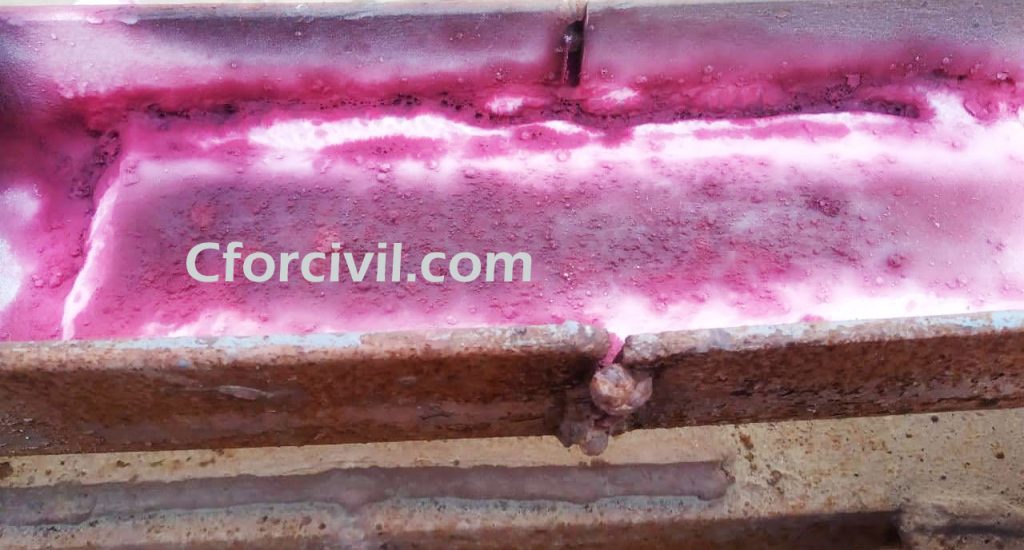
The DPT TEST ON TRUSS MEMBERS discuss in this post. DPT TEST ON TRUSS MEMBERS carries to detect the Surface cracks, fractures, pinholes, porosity, potholes, in the Truss. It is a low cost inspection method known as Liquid Penetrate Inspection ( LPI ), Dye Penetrant Inspection ( DPI ), Penetration Testing ( PT ).
MS ROOF TRUSS is a straight interconnected structural element triangular in shape. It makes by welding multiple structural elements together to form a single component or single Structure known as Truss. It uses to carry heavy loads and acts like load transfer Structure. For these reasons it is important to make sure all the welding at joints and the connections makes properly without any flaws.

DPT TEST ON TRUSS MEMBERS
Dye Penetration Testing (DPT) is a test uses to identify the discontinuities and improper welding in Truss joints.

The DPT TEST ON TRUSS MEMBERS carries to detect the cracks, fractures, pinholes, porosity, potholes, in the Truss welding joints.
Dye Penetration Testing has different names,
- Liquid Penetrate Inspection ( LPI )
- Dye Penetrant Inspection ( DPI )
- Penetration Testing ( PT )
It is a simple test. And easy test to identify the discontinuities in welding joints. Using this DPT TEST ON TRUSS MEMBERS all the surface defects and flaws are easily identify and rectify. This test carries out without difficulties. This is one of the oldest test for identification of the defects in welding in truss joints and connections.

After completions of all the welding for joints and connections of truss components, the welding slug removes. This performs using mechanical means or by chipping hammers. And cleans with a steel wire brush.
The specimen to test cleans with a cleaner, for applying of the Dye. It must be free from dirt, dust, paint, oil, grease and other foreign materials.
After this the penetrant applies to the surface by dipping, Spraying, or brushing.
And it allows to remains for three to five minutes on the member. This makes to get the penetrant sink into the cracks, pores, etc. This depends on the size of the members to test.
The excess penetrant removes from the surface and a white developer applies over the penetrant. This helps to draw penetrant out of the flaws and invisible indications is visible on surface.
Now defects like, the cracks, fractures, pinholes, porosity, potholes identifies. It is clearly visible on to the surface of the Member.

The defects like, the cracks, fractures, pinholes, porosity, potholes identifies and rectifies.


Leave a Reply